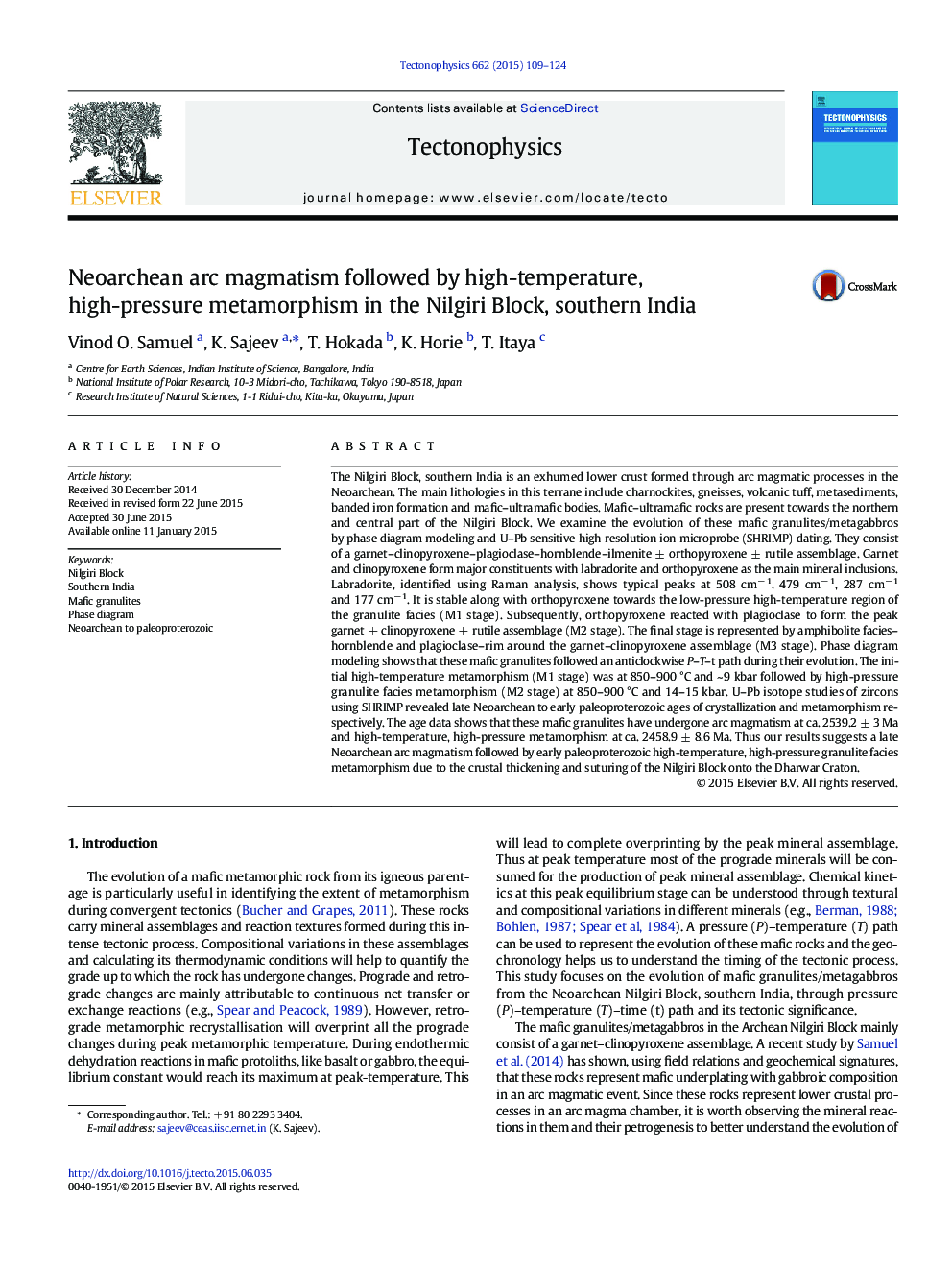| کد مقاله | کد نشریه | سال انتشار | مقاله انگلیسی | نسخه تمام متن |
|---|---|---|---|---|
| 4691460 | 1636733 | 2015 | 16 صفحه PDF | دانلود رایگان |
• Tectonic implications of petrogenesis of metagabbros in Nilgiri Block
• Mineral textures and phase diagram calculations of the mafic granulites
• An anticlockwise P–T path with peak conditions of ~ 850 °C and ~ 14 kbar
• U–Pb SHRIMP dating shows ca. 2539.2 ± 3 Ma (core) and ca. 2458.9 ± 8.6 Ma (rim).
• Neoarchean arc magmatism followed by high-grade granulite facies metamorphism
The Nilgiri Block, southern India is an exhumed lower crust formed through arc magmatic processes in the Neoarchean. The main lithologies in this terrane include charnockites, gneisses, volcanic tuff, metasediments, banded iron formation and mafic–ultramafic bodies. Mafic–ultramafic rocks are present towards the northern and central part of the Nilgiri Block. We examine the evolution of these mafic granulites/metagabbros by phase diagram modeling and U–Pb sensitive high resolution ion microprobe (SHRIMP) dating. They consist of a garnet–clinopyroxene–plagioclase–hornblende–ilmenite ± orthopyroxene ± rutile assemblage. Garnet and clinopyroxene form major constituents with labradorite and orthopyroxene as the main mineral inclusions. Labradorite, identified using Raman analysis, shows typical peaks at 508 cm− 1, 479 cm− 1, 287 cm− 1 and 177 cm− 1. It is stable along with orthopyroxene towards the low-pressure high-temperature region of the granulite facies (M1 stage). Subsequently, orthopyroxene reacted with plagioclase to form the peak garnet + clinopyroxene + rutile assemblage (M2 stage). The final stage is represented by amphibolite facies–hornblende and plagioclase–rim around the garnet–clinopyroxene assemblage (M3 stage). Phase diagram modeling shows that these mafic granulites followed an anticlockwise P–T–t path during their evolution. The initial high-temperature metamorphism (M1 stage) was at 850–900 °C and ~ 9 kbar followed by high-pressure granulite facies metamorphism (M2 stage) at 850–900 °C and 14–15 kbar. U–Pb isotope studies of zircons using SHRIMP revealed late Neoarchean to early paleoproterozoic ages of crystallization and metamorphism respectively. The age data shows that these mafic granulites have undergone arc magmatism at ca. 2539.2 ± 3 Ma and high-temperature, high-pressure metamorphism at ca. 2458.9 ± 8.6 Ma. Thus our results suggests a late Neoarchean arc magmatism followed by early paleoproterozoic high-temperature, high-pressure granulite facies metamorphism due to the crustal thickening and suturing of the Nilgiri Block onto the Dharwar Craton.
Figure optionsDownload as PowerPoint slide
Journal: Tectonophysics - Volume 662, 1 November 2015, Pages 109–124
